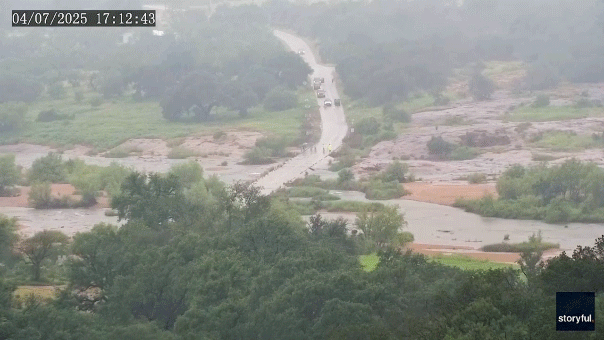The Impact of Climate Change on Global Food Security
As climate change continues to escalate, its effects on global food security are becoming increasingly severe. A recent report by the Intergovernmental Panel on Climate Change (IPCC) indicates that rising temperatures and unpredictable weather patterns threaten agricultural productivity worldwide. This critical issue demands urgent attention, as millions face the prospect of hunger and malnutrition in the coming decades.
Understanding the Current Situation
According to the latest data, approximately 690 million people globally are already undernourished, a number that has been exacerbated by recent climate-related disasters. The World Food Programme (WFP) warns that without immediate action, climate change could push an additional 130 million people into chronic hunger by 2030. This dire prediction stems from the interplay of extreme weather events, such as droughts and floods, which disrupt food production and supply chains.
Dr. Emily Rodriguez, an agricultural scientist at the University of California, emphasizes the urgency of the situation: “Climate change is not a distant threat; it’s impacting food systems right now. We need to adapt our agricultural practices to mitigate these effects and ensure food security for future generations.”
Major Contributors to Food Insecurity
Several factors contribute to the nexus between climate change and food insecurity:
- Rising Temperatures: Increased temperatures can lead to reduced crop yields and altered growing seasons.
- Extreme Weather Events: Hurricanes, floods, and droughts can devastate crops and livestock.
- Soil Degradation: Climate change exacerbates erosion and nutrient loss, further complicating food production.
- Economic Instability: Disrupted supply chains lead to price volatility, making food less accessible to vulnerable populations.
Data from the Food and Agriculture Organization (FAO) indicates that for every 1°C rise in temperature, yields of staple crops like wheat and maize could decline by 6% and 7%, respectively. Such declines threaten the livelihoods of farmers and the food supply for millions.
Regional Perspectives on Food Security Challenges
The impact of climate change on food security is not uniform across the globe. In sub-Saharan Africa, for instance, smallholder farmers are particularly vulnerable due to their reliance on rain-fed agriculture. A study conducted by Oxfam highlights that these farmers face increasingly erratic rainfall, resulting in crop failures.
Conversely, in developed regions, such as North America and Europe, climate change presents different challenges. While some areas may experience extended growing seasons, the risk of severe weather events poses a significant threat to agricultural infrastructure. “It’s essential to recognize that climate change affects food security differently depending on the region,” asserts Dr. Samuel Lee, a climate economist at the International Food Policy Research Institute. “Policies must be tailored to address local vulnerabilities.”
Strategies for Mitigating Food Insecurity
Addressing climate-induced food insecurity requires a multi-faceted approach. Here are several strategies that experts advocate:
- Investment in Sustainable Agriculture: Encouraging practices such as crop rotation and agroforestry can enhance resilience against climate impacts.
- Enhanced Climate-Resilient Crops: Developing and promoting genetically modified crops that can withstand extreme weather conditions may safeguard food supplies.
- Improved Water Management: Efficient water usage systems, such as drip irrigation, can help mitigate the effects of drought.
- Policy Reforms: Governments must implement policies that support farmers in adapting to climate change, including financial assistance and training programs.
Dr. Rodriguez notes, “We have the tools and knowledge to combat these challenges, but we need political will and investment to make them a reality.”
The Role of Global Cooperation
International cooperation is paramount in combating food insecurity exacerbated by climate change. Initiatives like the Paris Agreement aim to unite countries in reducing greenhouse gas emissions, a crucial step towards mitigating climate impacts on agriculture. Additionally, global organizations such as the United Nations and the World Bank are working to provide resources and support to vulnerable regions.
For instance, the FAO’s Hand-in-Hand Initiative aims to connect countries with the resources they need to enhance food security through sustainable practices, emphasizing a collaborative approach. “Food security is a global challenge that requires a unified response,” states Dr. Lee. “No single country can tackle this issue alone.”
Future Outlook and Implications
As the effects of climate change intensify, the implications for global food security will be profound. Without decisive action, the number of people facing hunger could increase dramatically, leading to social unrest and economic instability. Future strategies must prioritize sustainable practices, technological innovation, and international collaboration to mitigate these risks.
In conclusion, the intersection of climate change and food security presents a formidable challenge, but it is not insurmountable. By investing in adaptive agricultural practices, fostering global cooperation, and implementing robust policies, the world can work towards ensuring that everyone has access to sufficient, safe, and nutritious food. As we stand at this critical juncture, the call to action is clear: we must act now to protect our food systems for generations to come.
Call to Action: Join the conversation on sustainable agriculture and food security by participating in local initiatives or advocating for policy changes in your community. Your voice can make a difference!



